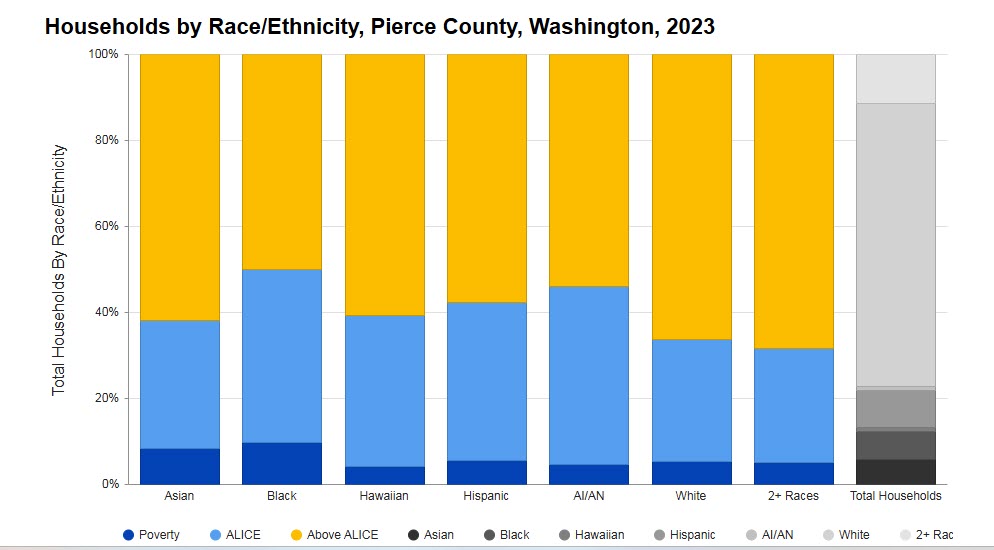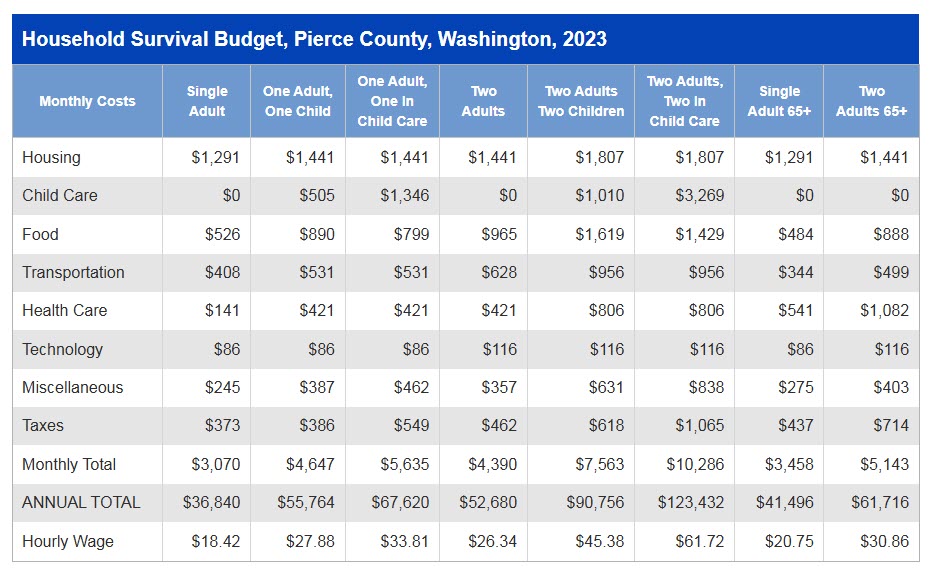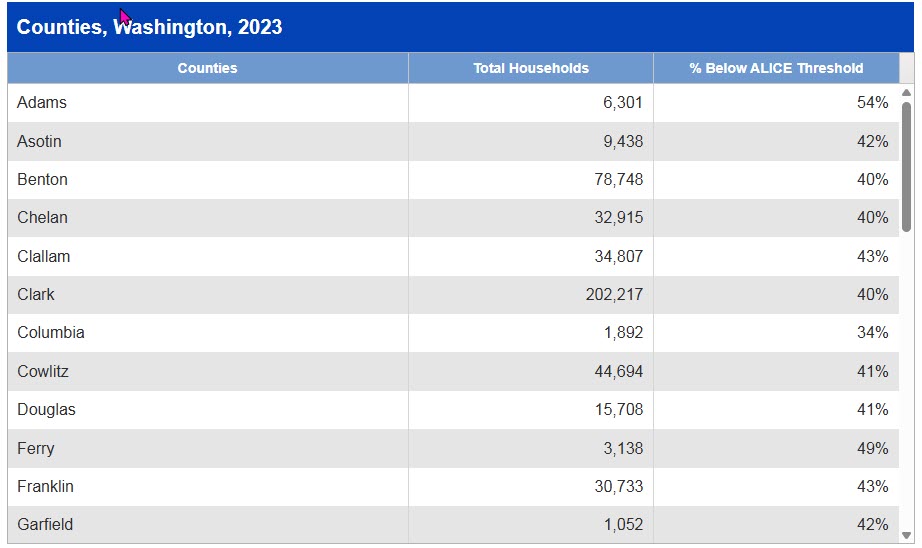
UNITED FOR ALICE
Many individuals and families who have a job—even two or three—are doing everything they can to make ends meet yet struggle to get by each month. ALICE represents the growing number of households who are above the Federal Poverty Line, do not qualify for many government assistance programs, and who are working yet cannot afford basic necessities to remain stable and self-sufficient.
We all know people who are ALICE: Asset Limited, Income Constrained, Employed — earning more than the Federal Poverty Level, but not enough to afford the basics where they live. ALICE workers were celebrated as essential heroes during the COVID-19 pandemic, yet they do not earn enough to support their own families.
ALICE households and households in poverty are forced to make tough choices, such as deciding between quality child care or paying the rent — choices that have long-term consequences not only for their families, but for all.
2025 Alice Town Hall
ALICE in Focus: Children update is now live- click here for more information
![]()
ASSET LIMITED
ALICE has no safety net
for emergencies
![]()
INCOME CONSTRAINED
ALICE's income falls short of
basic necessities
![]()
EMPLOYED
ALICE is working, but can't
afford the cost of living
Counties are the core geography for ALICE data: They reveal variations often masked by statewide averages, and the data is reported regularly and reliably.
Use the tool below to see an overview of financial hardship, county by county. The County Profile highlights key aspects of county economies across the state, including details related to county demographics, the cost of living, and the labor landscape.
In 2023, according to the Federal Poverty Level (FPL), 10% of Washington households were financially insecure. Yet this measure failed to account for an additional 28% of households that were also experiencing financial hardship. These households are ALICE: Asset Limited, Income Constrained, Employed — with income above the FPL, but not enough to afford basic expenses in the county where they live.
Between ALICE households and those living in poverty, an estimated 38% of households in Washington were below the ALICE Threshold in 2023. Households below the Threshold are forced to make impossible choices — like deciding whether to pay for utilities or a car repair, whether to buy food or fill a prescription.
Households below the ALICE Threshold are in every state and county across the U.S. and represent all demographic groups. Workers below the ALICE Threshold often perform the jobs that keep our economy functioning smoothly — they are child care providers, food service workers, cashiers, personal care aides, delivery drivers, and more. Their stories capture the systemic and structural barriers to financial stability, and the struggles and resilience of families experiencing financial hardship.
ALICE IN PIERCE COUNTY
ALICE is an acronym for Asset Limited, Income Constrained, Employed — households that earn more than the Federal Poverty Level, but less than the basic cost of living for the county. While conditions have improved for some households, many continue to struggle, especially as wages fail to keep pace with the rising cost of household essentials (housing, child care, food, transportation, health care, and a basic smartphone plan). Households below the ALICE Threshold — ALICE households plus those in poverty — can’t afford the essentials.

Financial Hardship Has Changed Over Time in Pierce County
As circumstances change, households may find themselves below or above the ALICE Threshold at different times. Use the buttons below to switch between ALICE data over time by number and percentage.

Financial Hardship is Not Equally Distributed
By total number, groups with the largest population of households below the ALICE Threshold tend to also be in the largest demographic groups. However, when looking at the proportion of each group that is below the ALICE Threshold, it is clear that some groups are more likely to be ALICE than others.

There were also differences in financial hardship by household type and age of householder.


The Cost of Basics Outpaces Wages
The Household Survival Budget reflects the minimum cost to live and work in the current economy and includes housing, child care, food, transportation, health care, technology, and taxes. It does not include savings for emergencies or future goals like college or retirement. In 2023, household costs in every county in Washington were well above the Federal Poverty Level of $14,580 for a single adult and $30,000 for a family of four.

The Labor Landscape is Challenging for ALICE Workers
A small portion of adults (16 years and older) in Pierce County were unemployed and a large number were working in 2023. However, a substantial portion of both full- and part-time workers are paid by the hour; these workers are more likely to have fluctuations in income and less likely to receive
Labor Status, Population 16 and Over, Pierce County, Washington, 2023

Financial Hardship Varies by Location in Pierce County
There is substantial variation in the number of households who live below the ALICE Threshold within the county. Explore the map and table below to learn more. The map is shaded to show the percentage of households that are below the ALICE Threshold (poverty-level and ALICE households combined). The darker the blue, the higher the percentage.





